45 Unit 4 Review, Practice, and Assessment
Learner Outcomes
- Define center of gravity, support base, normal force, static friction and kinetic friction.[2]
- Compare the relative torque applied to objects by various forces.[2]
- Identify the type of equilibrium exhibited by various structures and rank their relative stability.[2]
- Apply static equilibrium concepts to determine forces in physical situations, including normal force and friction.[3]
Outcome 1
1) Rank the structures below in order of increasing support base width.

2) Rank the structures below in order of increasing center of gravity height. All four structures are solid and are made of the same material.
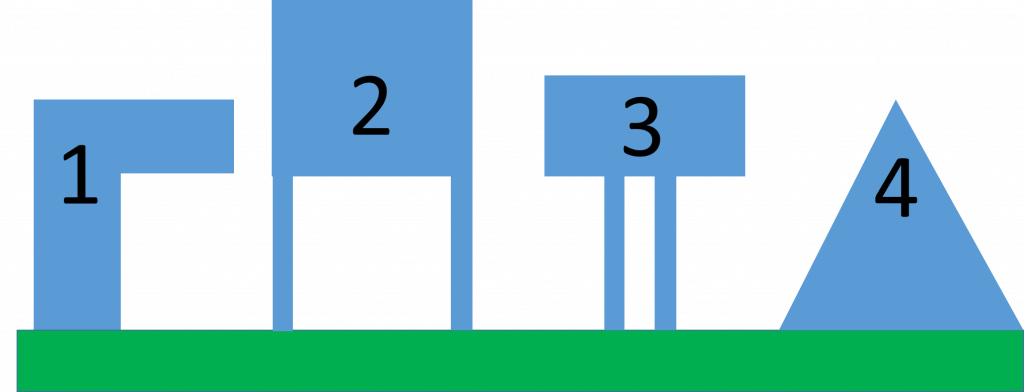
3) Rank the structures below in order of increasing normal force from the ground. All four structures have the same weight and are at rest.
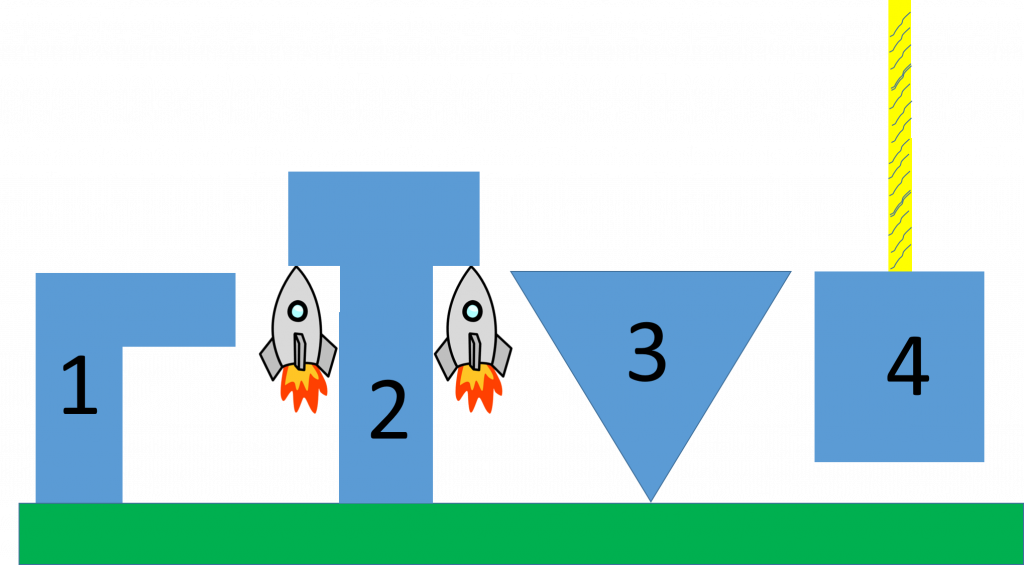
Outcome 2
5) A child at a playground pushes on a large disk that rotates on an axle trough its center. The child tries pushing on the edge of the disk in several different directions, as indicated by the top-down diagrams below. Rank the child’s attempts by the amount of torque applied to the disk, from least to greatest.
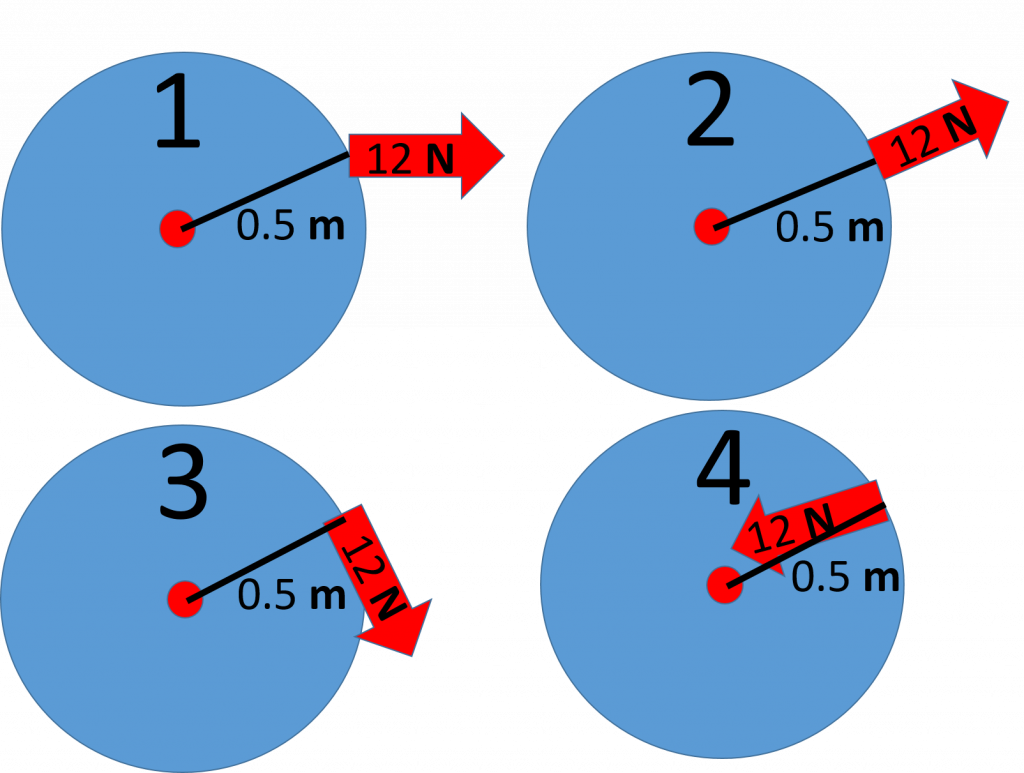
6) If the child in the previous problem was able to apply a 12 N force and the disk had a 0.5 m radius, what would be the value of the torque applied in trial 3?
Outcome 3
7) State which type of equilibrium is exhibited by each structure below: stable, unstable, or metastable.
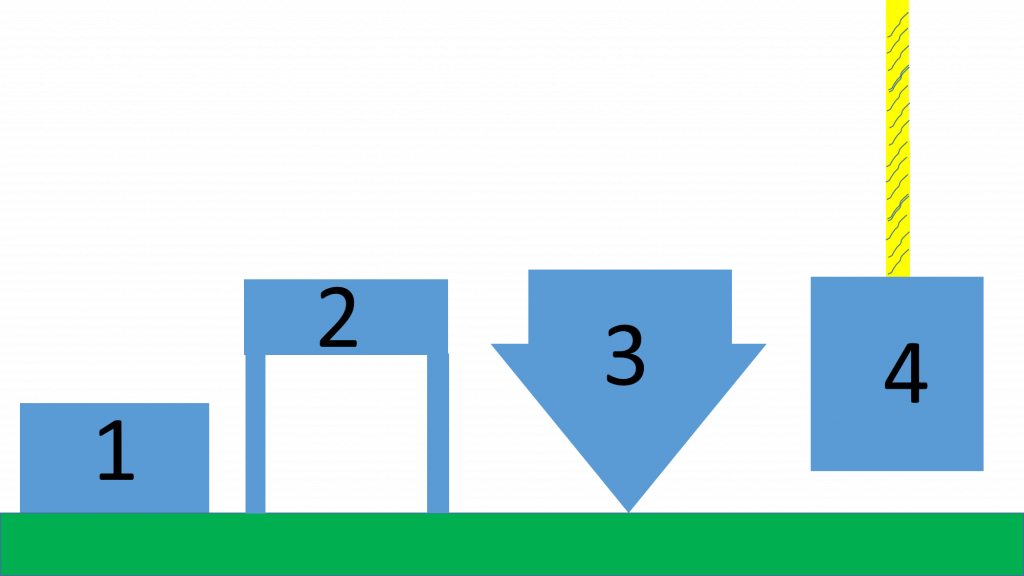
8) Rank the structures below in order of increasing stability. All structures are solid and made of a single material type.
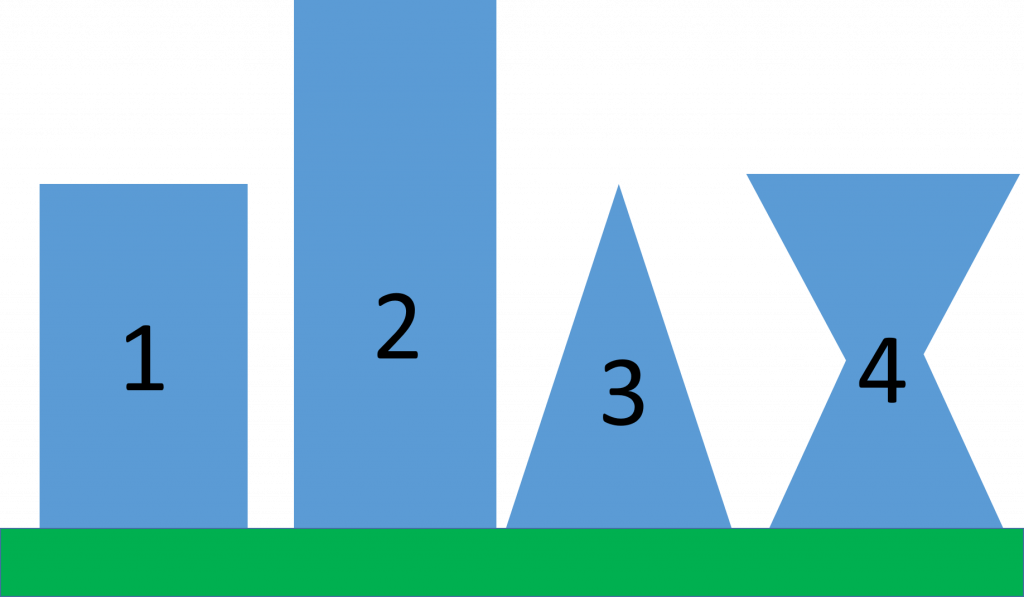
Outcome 4
9) A car with a weight of 10,000 N is sitting on concrete with the parking brake on.
a) What is the net force on the car?
b) What is the net torque on the car?
10) What is the normal force from the concrete on the car from exercise 9?
b) What is the maximum horizontal force that can be applied before the car begins to skid? List your sources for the friction coefficient.
c) After the car begins to skid, how much force is required to keep it moving at constant speed, despite kinetic friction?
d) If you apply only 1200 N of horizontal force to the stationary car, what is the static frictional force at that time?
11) Each structure in the following image is at rest.
a) What do you know about the net force on each block?
b) Structure #1 weighs 5000 N. What is the normal force on the structure?
c) Structure # 2 weighs 5000 N. Each rocket is capable of pushing with 1000 N of force. What is the normal force on the structure from the ground?
d) Structure # 4 weighs 5000 N. The rocket is capable of pushing with 1000 N of force. What is the tension force provided by the rope?
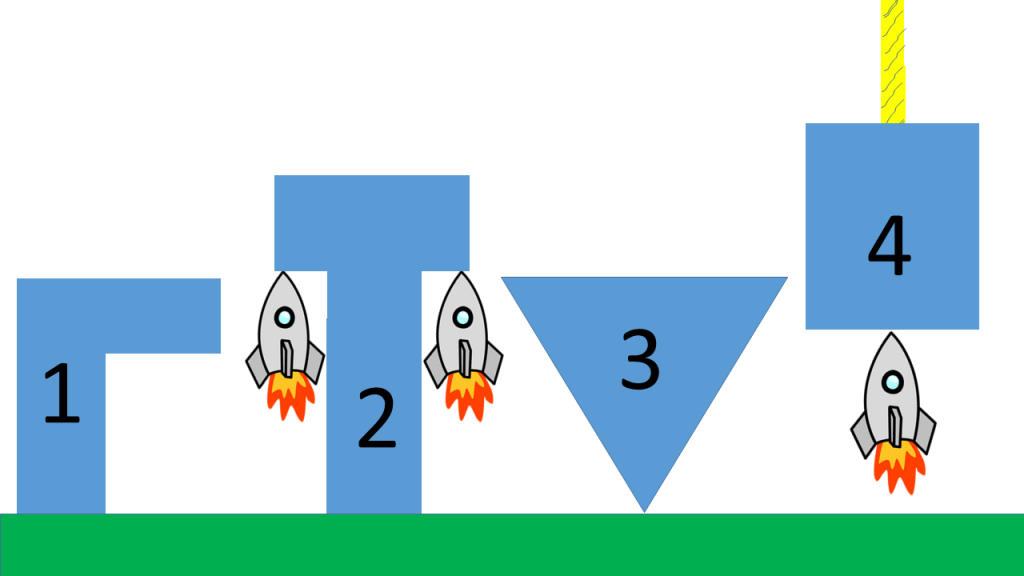
a point at which the force of gravity on body or system (weight) may be considered to act. In uniform gravity it is the same as the center of mass.
the outward force supplied by an object in response to being compressed from opposite directions, typically in reference to solid objects.
the force of gravity on on object, typically in reference to the force of gravity caused by Earth or another celestial body
the result of a force applied to an object in such a way that the object would change its rotational speed, except when the torque is balanced by other torques
not moving
the total amount of remaining unbalanced force on an object
the force that is provided by an object in response to being pulled tight by forces acting from opposite ends, typically in reference to a rope, cable or wire

